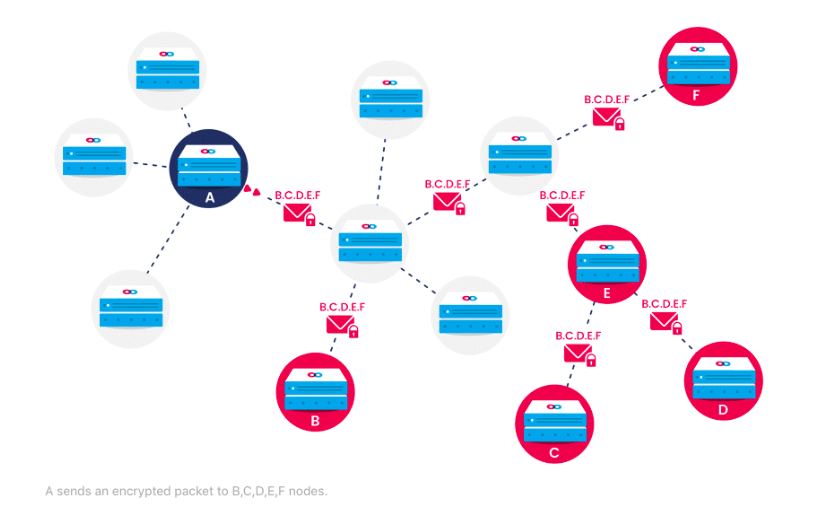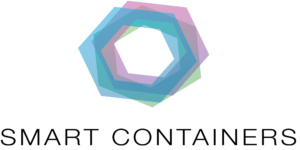Mick Hagen, Founder and CEO of Mainframe
Mick Hagen, Founder and CEO of Mainframe, is on a mission to change the world through a censorship-resistant, surveillance-resistant, decentralized network. With values of privacy and freedom at the core, Mainframe will allow anyone to send messages anywhere that are untraceable and tamper-proof.
Through a series of industry-first physical airdrops throughout Asia and recently at Consensus in New York, Hagen and his team are spreading the word about the importance of freedom–and focusing on building a product that will hopefully bring that freedom worldwide.
In the following interview with Coin Central’s Steven Buchko and Christina Comben, he talks about aiming high and taking risks, bouncing back from failure, and the importance of building a community of giving around the Mainframe project.
The Interview
SB: I’m always curious to hear – What was your first introduction to cryptocurrency and blockchain technology?
MH: My first company was in the education space. I dropped out of Princeton and started a company called Zinch, a web app that connected high school students with university admissions officers. After about six years, that was acquired by Chegg.
After it was acquired, I had a little bit of money. I was angel investing, and one of the things that I bought in 2013 was Bitcoin. At the time, it was mostly just an experiment, like “Oh, what is this crazy thing?” I wasn’t really digging into the underlying technology at the time.
But in 2015, I was a mentor at TechStars. And, one of the projects that I was mentoring was called AID:Tech. Essentially, they were using blockchain technology to help solve some of the financial inclusion challenges of refugees. Basically, they would partner with nonprofit organizations who would give out gifts, food, supplies and even prepaid credit cards. Then, they would use blockchain technology to keep track of those items to make sure there was no fraud and to make sure everything was going smoothly with all the different refugee camps.
It was the first time that I really saw the power of blockchain technology beyond just my speculative investment in Bitcoin in 2013. That’s really when I started to dig in a little bit more. I began doing other investing in interesting blockchain projects. And, in 2016, I started to look at Ethereum.
We started Mainframe about five years ago, and our initial idea was to build better decentralized messaging protocols. But at the time, we weren’t thinking about blockchain at all.
We were just thinking about email – IMAP, SMTP, etc. Technically, email is decentralized, but it lacks perhaps the biggest innovation of blockchain technology which is the incentivization layer.

When we started Mainframe five years ago, we were really just thinking about how to make email better with some of these decentralized protocols. Then, as I learned more about blockchain technology, and we struggled to create a strongly decentralized network, we started to experiment with using blocking technology as a way to incentivize people on our network to host their own Mainframe servers and to support the network in a way that made it more decentralized.
Basically what happens, and this happens with email as well, is that we’ve come to trust Google, Microsoft, Apple and a few others to host all of our e-mail. That was happening with Mainframe.
When we built this messaging network, a lot of the customers and the people that we were working with, mostly businesses, asked, “Well why don’t you guys host it since you’re the experts?”
So, we ended up hosting all of the messaging for these businesses. Although the protocols were decentralized and federated, it ended up just being a centralized service in practice because they didn’t want to have the bother with it.
One of our ideas from the get-go was to try to build a messaging network that was unstoppable. We didn’t want it to be controlled by any kind of centralized institution, even ourselves. We wanted to build a network that was completely free, open, and available.
It can’t be surveilled, can’t be censored, etc. That was one of the reasons why we decided to pursue blockchain technology more heavily in 2017.
We brought on Carl Youngblood, our CTO, because he had a lot more experience with blockchain. He was mining bitcoin in 2010. He was part of the early Ethereum community. He invested in the Ethereum presale. He just had a lot more experience from a technology perspective.
We brought him on, and we really started going full force, specifically leveraging blockchain technology for incentivization. Even today, we’re not building a new blockchain. It’s a peer-to-peer network for communication, and we’re leveraging blockchain to reward and incentivize nodes on the Mainframe network to relay messages, to deliver messages, and to store messages if the recipient isn’t online.
Your timing couldn’t be more perfect right now. You see issues like Russia trying to get information from Telegram. The way you’re building censorship resistance would help to prevent issues like that, correct?
Yeah, exactly. The timing is wild. You’ve got Russia trying to get into Telegram. You’ve got China constantly monitoring, censoring and surveilling information on WeChat and many other applications. Not too long ago, Brazil blocked WhatsApp from being used.
Signal is an encrypted messaging app using this method called domain fronting. It was essentially the way that they were getting around censorship in countries like Egypt, Iran, the UAE, and Amazon basically told Signal, “No longer can you do this domain fronting.” So, now Signal is completely blocked in those countries.
Then, you’ve got the Facebook scandal a few months ago around data ownership and privacy.
This is very relevant right now. Most of our use cases that we’ve been focused on are with enterprise security and privacy. We’re even working with some governments. But, it’s cool to see that just normal consumers are starting to wake up to the fact that if they’re not paying for the product, they are the product. They’re starting to care more about privacy and freedom in that sense.
How exactly does Mainframe work? How do you guarantee censorship resistance and the privacy surrounding data and messages?
We’re building the infrastructure.
We also built an app called Onyx, the messaging app that people can use to communicate. But, Mainframe is the infrastructure. It’s the decentralized communication network – a network of nodes.
You’ve got people all over the world who are running Mainframe nodes, and essentially those nodes relay messages across the network. That’s why the Mainframe token is essential.
They’re paid to relay messages, to route messages across the network, to deliver messages, to store messages. And, everything’s fully encrypted. That’s table stakes at this point for messaging networks.
We also have this functionality called dark routing which creates an added layer of privacy for people who want it. It’s optional depending on the message. If you’re having a conversation that’s very private, you can turn on dark routing.

Here’s how it works: Imagine that you’re sending a piece of mail, just postal mail. Typically, when you send mail, you’ve got to put the door number, the street address, the city, the postal code, all the information.
With dark routing, when you’re sending a message to somebody, you could just put the city. Maybe you say, “I want to send this to Chicago.” You’re not going to put the door number, you’re not going to put the street number. You want to send this piece of mail to Chicago.
So, it’ll take the fastest path to Chicago. But once it’s in Chicago, it is going to be broadcast to every single address in the city. Obviously, in our world, it’s every single node in that area. However, the only one that has the private keys will be the one that decrypts and reads the message.
Basically, that creates a whole new level of privacy because anybody who’s watching that mail won’t know who you’re really speaking with.
This is like the Edward Snowden situation. Even though the government couldn’t necessarily read the messages, they could still glean a lot of metadata from watching the traffic and observing which nodes were speaking with which.
Dark routing enables this added layer of privacy where every message that is sent is broadcast to all the nodes on the network. It’s like sending out a lot of decoys where you don’t know who it’s actually intended for. The value of that is then you can’t disrupt it. You can’t perform a denial of service attack on any specific nodes, stopping them from communicating because you don’t know which node is the one that’s speaking.
Dark routing, I would say, is the absolute killer feature in terms of delivering an added sense of privacy on this network.
There are four key pillars of our network, and I’ve already covered two – encryption and dark routing. Decentralization is the third and incentivization is the fourth.
Like I said earlier, Email is technically decentralized, but it’s lacking the incentivization piece which means it’s not a very strong decentralized network. A lot of these messaging networks are decentralized but don’t have any of the incentivization. Again, IMAP, SMTP, XMPP. There’s this thing called Matrix, a decentralized protocol, but it doesn’t have the incentivization piece either.
When you combine decentralization with incentivization, you create a really strong network which makes it hard to stop. Then, when you add on dark routing on top of that, it makes it impossible to stop. You can’t censor it, you can’t surveil it, you get nothing.
Anybody who’s observing this network will not even know where to begin if they’re trying to stop communication. Mainframe is completely unstoppable. It’s censorship resistant, surveillance resistant, and hopefully, that explains a little bit about this network.
We’ve been talking mainly about peer-to-peer messaging, but you’ve brought up expanding beyond that as well. Could you explain that more?
This is one of the things that I think we can be better at in terms of our marketing and communication. We talk about communication, we talk about messaging because that’s a great use case and it’s a use case that’s often censored or surveilled.
But really, all this network is doing is relaying data packets. Could it be voice? Certainly, it could be voice. Could it be video? Certainly, it could be video. Could it be a new type of application like a Reddit or a Medium or a decentralized Twitter? Certainly! Those are the types of decentralized applications that could be built on the Mainframe network.
It’s not limited to just messaging. I mentioned a Reddit or a Twitter or a Medium because those are the types of applications that can sometimes be censored or surveilled. I think those would be great use cases to be built on the Mainframe network, and they’re great examples of applications that can be built which are not messaging.

For those other types of social media or other types of messaging apps, is that something that you’re planning to do in-house or are you planning to just build out the protocol layer and have other people build on top of it?
We’re building a platform, and we want to get the ball rolling. We want to kickstart the platform. The question is, “Should we build another app that’s not messaging to showcase what’s possible, or should we invest in and incubate other projects?”
There are some entrepreneurs who are approaching us saying, “Hey, I’d love to build on the platform.” We’re thinking about investing in them. These are discussions that we’re having right now.
Ultimately, we want to be focused on the platform. We want to be focused on the infrastructure, but we realize that for people to want to build on the platform, they need to see what’s possible. They need to see some examples to get the ideas flowing. We’re trying to think through the strategy there, but ultimately, the vision is to just focus on the platform and the infrastructure.
[thrive_leads id=’5219′]
Anyone can be a user? For example, once it’s launched, if I wanted to join the network, I would just need an address. And then, if I wanted to send a message to somebody, would I just send it to their address?
Exactly. To be a user, you would need to use an application, and the only application that exists on the network right now is Onyx.
The main people that we’re targeting are developers. Developers who can build other interesting applications on our network. If you want to immediately use our network today, the only application that’s end-user facing is Onyx.
Something that comes up a lot with censorship resistant platforms is the use of it by malicious parties (organized crime, terrorist organizations, etc). Are you doing anything to curb that? It’s a hard line to draw.
I didn’t sign up for this to be the go-to network for terrorists. I certainly don’t want that, and that is the absolute last thing we want.
Right now, a lot of our focus, energy, and resources are going towards enterprises, governments, and institutions who need that added layer of privacy and security. We’re trying to work closely with them.
A lot of this is based on our communication, our energy, our focus, our narrative, the use cases that are getting built, and the developers that we’re working with. Hopefully, that drowns out and reduces the risk of some of these more malicious actors getting a hold of this and using it for bad things.
The ugly reality is that this is open source technology. Being open source technology, some people might use it for things that are not so good. That’s going to be hard to stop, but we’re going to do everything we can to keep this technology in the hands of people who are doing good things.
People who want to protect their data, companies who want to keep their trade secrets secure from corporate espionage, and governments who want to keep their confidential information secure.
Again, I don’t have a great answer for this, honestly. It’s tough. I can’t say that we can totally stop bad people from using this, but I can say that all of our energy and focus is going towards helping good people use it for good reasons.
In the end, the pros should outweigh the cons?
That’s what we hope, and that’s what we believe. Like the Internet.
In a way, we are creating a new Internet – a layer on top of the existing Internet that creates more privacy and more security. Obviously, the Internet as we know it today has a lot of ugly and nasty stuff on it, but it’s opened up a whole new world of possibilities. I think generally, people would agree that the Internet is a good thing. It’s a great thing. So, hopefully, they will also think that about Mainframe as well.
Editor’s note: This concludes Part One of the interview. Check out Part Two to read about Mainframe’s unique token distribution strategies (physical airdrops, charity givebacks, etc..), the lessons Mick took away from previous failures, and why he believes freedom and privacy are important in any culture.
Never Miss Another Opportunity! Get hand selected news & info from our Crypto Experts so you can make educated, informed decisions that directly affect your crypto profits. Subscribe to CoinCentral free newsletter now.











